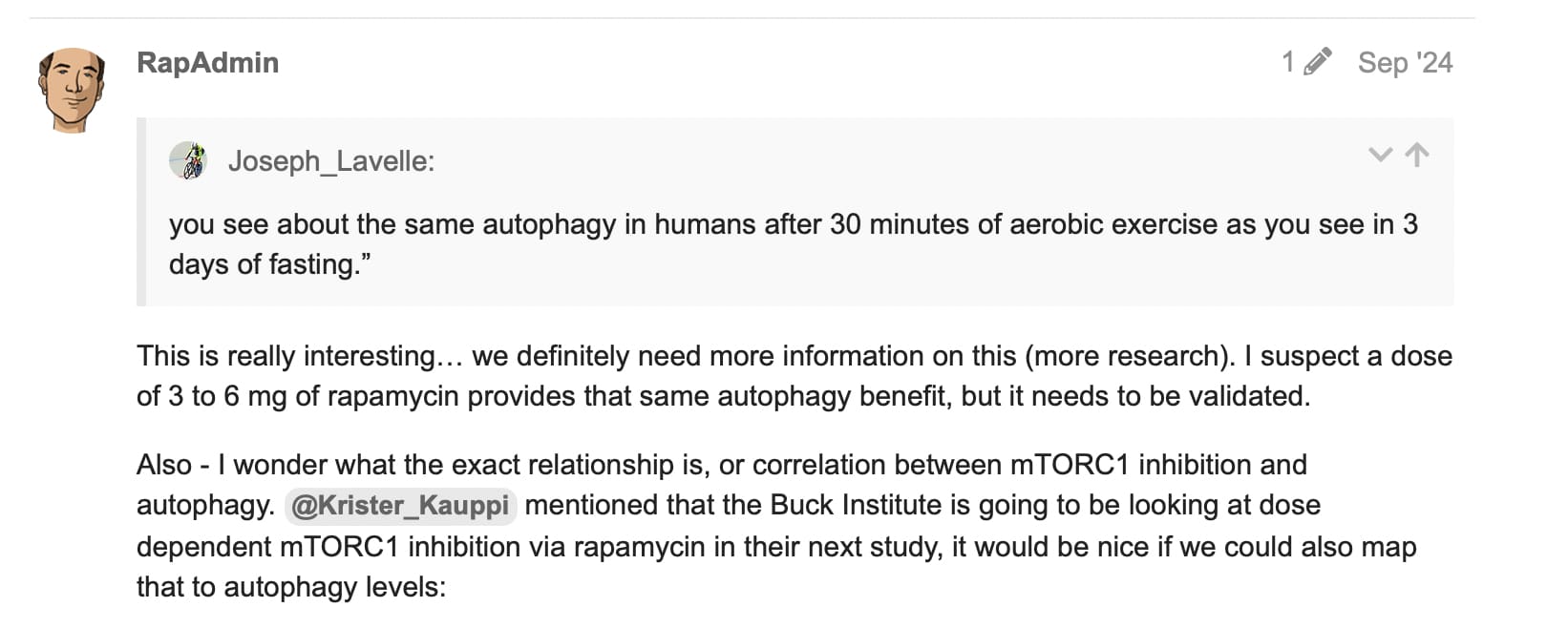Here is the very fundamental flaw in your hypothesis: it was tested, and has failed.
Really, it’s the very first question you should have asked yourself. Does exercise extend lifespan in mice?
If your thesis is that sedentary mice in a lab setting are a poor model for life extension interventions, because whatever drug is tried - like rapamycin - it will at best replicate the life extending effects of exercise, then ask: but does exercise extend the life of mice?
And the answer is: NO. Exercise enhances the general health, prevents frailty and a variety if diseases, lowers the mortalty risk, but does not, repeat, does NOT extend lifespan in mice (or humans). No organism, including human has broken the longevity barrier for the species with an exercise intervention. If the lifespan of a mouse is roughly 900 days (depending on the strain of mice), exercising the mouse will drastically raise the odds that the mouse will actually hit the 900 days - it will prevent the premature death of the mouse. It is called “squaring the curve”. If you take a group of sedentary mice, you will start having some of them die early, like at 400 days, some at 500, 600, 700, and so on, and finally most mice will die at the natural limit of about 900 days. So as the mice age, the survival curve for the group slopes down as fewer and fewer mice survive. But you take a group of mice and exercise them, and now the survival curve looks very different - very few mice drop dead along the way at 400, 500, 600 days, the curve for the surviving group dosn’t slope down - it keeps straight… until about 900 days, when it nosedives straight down at close to 90 degrees, as almost all the mice die out. You’ve squared the curve of survival, you have not extended it.
It’s the exact same situation in humans. You take a group of people and exercise them lifelong, and you prevent most from dying prematurely - from heart attacks, frailty and many diseases as the average sedentary human does. But you don’t break any longevity barriers. You don’t end up with supercentenarians who all exercised. Athletes live healthfully a full lifespan - which most sedentary don’t - but they are not particularly prevalent in the very old (look up the statistics of average lifespan - athletes only gain a few years compared to nonathletes). In all animal and human models, the survivors who go much beyond the average lifespan are genetic outliers - not exercisers.
Life-long spontaneous exercise does not prolong lifespan but improves health span in mice
Conclusion
“Life-long spontaneous exercise does not prolong lifespan but improves healthspan in mice. Exercise is an intervention that delays age-associated frailty, enhances function and can be translated into the clinic.”
Now back to your hypothesis. We know from studies, that another lifespan extending intervention, CR (which incidentally also suppresses mTOR), has been compared to exercise and exercise failed to extend max lifespan, while CR did.
Rapamycin in the many organisms studied, including mice, has extended lifespan, while many other interventions, including exercise, have not.
That’s the entire point. Rapamycin extends lifespan in the organisms studied, worms, flies, mice, dogs(? - hopefully we’ll soon find out), marmosets… and like with all lifespan interventions in humans, we have no data, because the studies would take more than a century.
Again, when generating a hypothesis, the first step is to check whether it has already been studied and refuted. Like exercise.
And a small heuristic, rule of thumb that I use when generating hypothesis. If something extremely obvious occurs to me, like “hmm, I wonder if lab conditions, such as sedentary mice impacts my study, like, say, exercise”, I first, before going any further, put together some facts, and some probabilities. Fact: there are literally thousands of extremely smart, dedicated and careful scientists who are conducting these studies. Probabilities: what are the odds, that this extremely obvious hypothesis that has occured to me - lab conditions, sedentary, exercise confounder - has not occurred to any of these thousands of scientists who have dedicated their lives to this? I’d say extremely remote. Therefore, before I run off with this hypothesis and go far with conclusions, let me check if they have done any studies of my hypothesis. And lo and behold, they have, and I read it with interest.
This doesn’t mean one should not ask oneself these questions - absolutely one should, 100%! If one doesn’t, one learns nothing. I commend anyone asking sensible questions - and this is a very sensible question, yes, it makes total sense to ask whether lab mice being sedentary doesn’t impact the experiment and the result!
I personally exercise, but I take rapamycin to give me a boost beyond what exercise can. I don’t know if it will, but that’s my gamble. Before I took rapamycin, I did extensive research, and since I already exercise, I want something more which I cannot get just from exercise, otherwise, why do it. It’s a gamble… the result of which I may never know - what I’m doing, is playing the odds.

